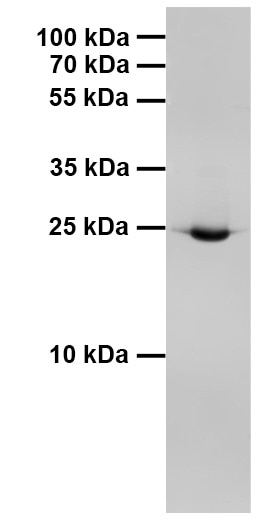Affinity purification, depletion, and immunoprecipitation of GST-tagged proteins
Publications using ChromoTek's GST-Trap in various applications
This article provides an overview of scientific publications that reference the ChromoTek GST-Trap superior binding performance for various applications. These include immunoprecipitation (IP), Co-IP of Glutathione S-Transferase (GST)-fusion proteins, and Luminex bead assays of GST-tagged and GFP-tagged proteins. Besides, usages for depletion of GST (glutathione sepharose) after cleavage from recombinant fusion proteins and affinity purification of GST-tagged proteins are possible.
|
Application |
Reference |
|
IP |
Bonhoure, A. et al. Acetylation of translationally controlled tumor protein promotes its degradation through chaperone-mediated autophagy. European journal of cell biology 96, 83-98, doi:10.1016/j.ejcb.2016.12.002 (2017). |
|
IP |
Brenke, J. K. et al. Identification of Small-Molecule Frequent Hitters of Glutathione S-Transferase-Glutathione Interaction. Journal of biomolecular screening 21, 596-607, doi:10.1177/1087057116639992 (2016). |
|
IP |
Costello, J. L. et al. ACBD5 and VAPB mediate membrane associations between peroxisomes and the ER. J Cell Biol. 216, 331-342, doi:10.1083/jcb.201607055 (2017). |
|
Co-IP |
Au Yong, J. Y et al. The Nim1 kinase Gin4 has distinct domains crucial for septin assembly, phospholipid binding and mitotic exit. Journal of Cell Science 129, 2744-2756, doi:10.1242/jcs.183160 (2016). |
|
Co-IP |
Haque, M., Stanfield, B. & Kousoulas, K. G. Bovine herpesvirus type-1 glycoprotein K (gK) interacts with UL20 and is required for infectious virus production. Virology 499, 156-164, doi:10.1016/j.virol.2016.09.003 (2016). |
|
Co-IP |
Li, Z., Zhou, L., Prodromou, C., Savic, V. & Pearl, L. H. HECTD3 Mediates an HSP90-Dependent Degradation Pathway for Protein Kinase Clients. Cell reports 19, 2515-2528, doi:10.1016/j.celrep.2017.05.078 (2017). |
|
Luminex bead |
Groll, N., Emele, F., Poetz, O. & Rothbauer, U. Towards multiplexed protein-protein interaction analysis using protein tag-specific nanobodies. Journal of proteomics 127, 289-299, doi:10.1016/j.jprot.2015.04.017 (2015). |
|
Kinetic characterization |
White Paper: Immunoprecipitation of proteins at very low expression levels using GST-Trap and MBP-Trap (link) |
GST-Trap is a function and sequence characterized affinity reagent. The quoted whitepaper “Immunoprecipitation of proteins at very low expression levels using GST-Trap and MBP-Trap” describes its binding characteristics in detail and outlines how you can benefit from GST-Trap’s high affinity, i.e. low nanomolar dissociation constant of 5nM. Furthermore, its shows data on effective pulldown of even low-leve lGST-fusion protein amounts. Its slow off-rate facilitates prolonged washing. That is why the GST-Trap is a superior tool for immunoprecipitation, affinity purification, and depletion of GST-fusion proteins.
GST-Trap consists of an anti-GST single domain antibody (sdAb), also known as VHH or “nanobody” derived from alpaca heavy chain antibodies. VHHs’ superior antigen binding is a result of a high affinity towards 3D epitopes. Therefore, ChromoTek’s Nano-Traps have matched affinity partners for corresponding denaturated proteins (i.e. 2D or linear epitopes) in Western blot applications: The anti-GST rat monoclonal antibody 6G9.
Western blot analysis of cell extract from BL21 cells expressing GST
